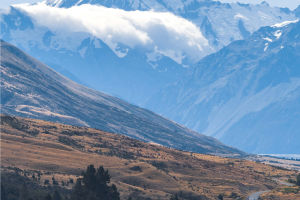Switzerland has established a "direct payment system" to protect the biodiversity of Alpine pastures.
This system incentivizes pastoralists to provide a wide range of ecological services while establishing a system of conservation assessment and monitoring with private participation. This approach is essential to preserving open pasture landscapes while maintaining biodiversity.
Alpine meadows are a source of pride for Switzerland, and their protection is enshrined in the constitution.
These meadows are not only essential to Switzerland's national identity, but they also preserve a richer diversity of plants than monoculture secondary forests. These meadows make up 11% of Switzerland's territory, making their conservation critical.
The key to preserving open pasture landscapes is to strike a balance between too many and too few livestock. Too many livestock can cause ecological degradation and unsustainable use of grassland resources, while too few can cause the succession of grasslands to scrub or forest, leading to the loss of open pastures.
Switzerland strikes this balance by promoting grazing traditions and nature conservation in the Alps. This approach recognizes the importance of cultural landscapes in nature conservation and emphasizes the dynamic process of human-nature interactions.
The construction of intelligent pastures is also critical to the conservation of Alpine meadows. The intelligent pasture model relies on policy guidelines and market demand, and it leverages the industrial Internet and the Internet of Things technology.
The Beidou positioning system and cell phones are also used to integrate technology and nature, promote local economic development, and strengthen the yak milk industry. This model includes three dimensions: mode, product innovation, and industrial innovation and change.
It aims to establish a green, organic livestock production system that relies on high-quality forage supply and accurate use of key technologies. The model also focuses on modern pasture resource management, the establishment of a grass and livestock production and traceability system, and the demonstration of typical characteristics of modern pasture models.
The implementation of modern pasture models varies according to the region's resource endowment. It supports the integration of natural pasture use, artificial grass planting, high-quality forage processing, quality forage processing, livestock healthy breeding, and green livestock product processing.
This model emphasizes the whole industry chain traceability system, modern management system, and industrial integration technologies.
In addition to the "direct payment system," Switzerland has implemented other measures to protect its alpine pastures and biodiversity. One example is the establishment of nature reserves and protected areas, which restrict human activities such as construction and development.
The Swiss government also provides funding for research and monitoring of alpine ecosystems, which helps to inform conservation policies and identify potential threats to biodiversity.
Moreover, there is a strong emphasis on public education and awareness-raising campaigns to promote responsible tourism and outdoor activities in the Alps.
These efforts have contributed to the preservation of a unique cultural and ecological landscape, which is not only important for Switzerland but for the entire world.
Switzerland's approach to conserving Alpine meadows is commendable. By incentivizing pastoralists to provide ecological services, they strike a balance between nature conservation and grazing traditions.
Furthermore, the implementation of intelligent pasture models is critical to the preservation of Alpine meadows, promoting green, organic livestock production, and supporting the yak milk industry.
The combination of these efforts ensures the preservation of Alpine meadows and promotes local economic development.


